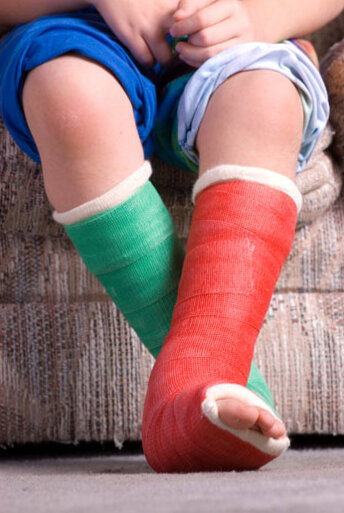Using Serial Casting to Improve Movement Range in Billings
Designed to stretch tight muscles, serial casting treatments aim to increase range of motion in a particular joint. At Advanced Therapy Clinic, in Billings, we offer serial casting treatments for our young patients. It involves the application of fiberglass cast material, along with other material that provides adequate padding and protection for bony prominences. A new cast will be applied once a week for 4-8 weeks depending on how the child tolerates casting and on the progress of range of motion. The treatment is primarily used in cases where muscle tightness is common, such as with cerebral palsy, patients with a brain injury, and idiopathic toe walking. It is also used post-operatively to stretch the musculotendinous structures and post-botox for gaining maximum muscle length.
What Are the Benefits?
Changing the length of the muscle should allow your child to function using the correct patterns of movement. For example, if the casting is applied to increase the range of motion in the calf, your child should be able to walk with either the heel touching the floor or being closer to the floor than before casting. It also improves standing and walking posture, as the foot is placed in a better position. Furthermore, the brain is provided with the correct movement feedback, which helps in motor learning and leads to increased chances of using the correct movement patterns in the future. In some cases, it might help in preventing the tightness from progressing further. There will also be an improvement in balance and coordination and you will notice an overall improvement in your child’s everyday activities.
How Will the Benefit of Serial Casting Be Measured?
The physical therapist will measure the range of motion in the joint to be casted before starting the procedure and every time the cast is changed. There should be an increase in joint range of motion at every cast change. They will discuss with you the functional goals which your child should be able to achieve after the completion of treatment.
What Happens after Completion of the Treatment Block?
In most cases, it is recommended that the child wear orthotics for 6-12 months after casting to maintain the length of the muscle and continue training the brain to walk with a more normal gait pattern. It might take a while to get adapted to the increase in range of motion, and there could be a brief period where your child might feel unsteady. Muscle weakness in the opposite muscle group that was casted may become more apparent after casting; therefore, a course of physical therapy post-casting is typically recommended to work on strengthening those muscles and learning how to move with the newly available range of motion. An intensive home exercise program will also be provided to strengthen the muscles so the obtained range of motion and the benefits of casting can be maintained.
Are There Any Activity Limitations?
Your child will need to wear a cast boot over the cast during waking hours. The Darco Pediatric Slimline Cast Boot works well and can be purchased online or through your local orthotics clinic. With the cast boots on, your child can participate in all activities without restrictions, with the exception of anything that can cause the casts to get wet. The child must avoid all water activities, including swimming, showering and taking a bath. To bathe the child, you can either do sponge baths, or if the child is old enough, take a bath with the extremity that is casted kept out of the bath. Plastic bags or other coverings over the cast typically do not prevent water from reaching the cast material.
What Precautions Should Be Taken with the Cast?
Make sure your child does not stick anything between the cast and their leg, as this might loosen it, reducing its effectiveness. It might also cause skin irritation, leading to removal of the cast earlier than intended.
What Are the Risks and How Can They Be Managed?
Some children might feel an itching sensation due to skin irritation. On rare occasions, if the cast comes in contact with bony prominences, the skin might blister. This will cause pain and the cast will have to be removed. Regularly check the toes for any signs of discolouration (bluish appearance) or swelling. Also, there should not be any numbness or tingling sensation in the toes. Skin irritation and blisters can also occur if the cast gets wet. In the event of any of the above, the cast should be removed immediately. If it happens during business hours, call your therapy clinic to have the cast removed that day. If this occurs outside of business hours, you will need to proceed to the emergency room to have it removed.



